Since Cecilia Giménez repainted it in the summer of 2012, Borja’s ‘Ecce Homo’ has starred in memes, theses and even an opera. Now, ten years after the world learned of the old and new face of the painting found in the Mercy Shrine, this story that has gone around the world is on its way to becoming a feature film.
It is a “national film project” that seeks to collect “Cecilia’s life and her experience with ‘Ecce Homo'”, advances Eduardo Arilla, mayor of Borja. After the conversations held in recent weeks, the Consistory has sent the image rights contract corresponding to the production company in question, of which the mayor does not provide more details at the moment. The signature is missing. “Whether they come here or not remains to be seen. It has not even been talked about, but it would be very good for the town », he points out. He values that “with the whole team the hotels can be filled”.

The first publication in the press of Cecilia’s repainting,
an article in ‘Heraldo de Aragón’ published ten years ago this Sunday, put Borja and the Misericordia Sanctuary in the world arena. Some 11,000 visitors arrive in the Borjana district each year and the ‘Ecce Homo’ has generated some 300,000 euros until July. A money that is invested in the maintenance of the sanctuary, the salary of two guides (two positions created by the phenomenon) and in scholarships for the elderly in the Hospital Sancti Spiritus residence. Both this center and the complex in which the painting is located are owned by the Fundación Benéfica Sancti Spiritus y Santuario de Nuestra Señora de Misericordia, whose patronage is made up of the municipal corporation.
In 2016, Cecilia Giménez unknowingly received film director Alejandro Amenábar at her home
Arilla recalls that the idea of creating a film around the phenomenon is not new: “We already had a first attempt a few years ago, we signed the image rights, but it did not get the necessary funds and it stopped.” This time it was “a comedy.” She now explains that the scenario is different.
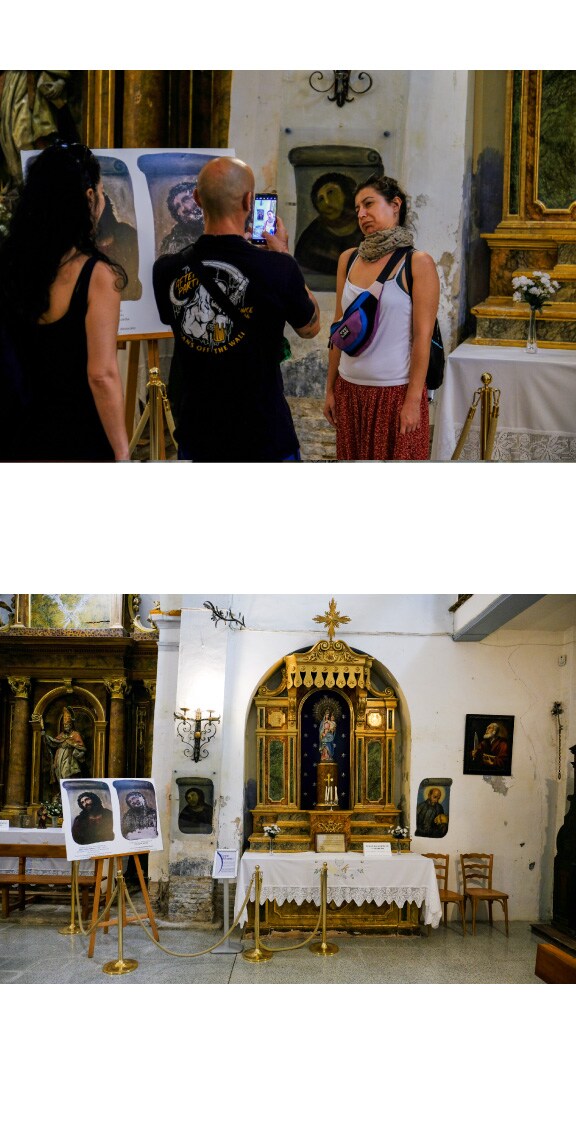
A group of visitors, in July this year, pose in front of the ‘Ecce Homo’. Oscar Chamorro
Next to Cecilia’s painting, the original work of the painter Elías García was placed. EITHER. CH.
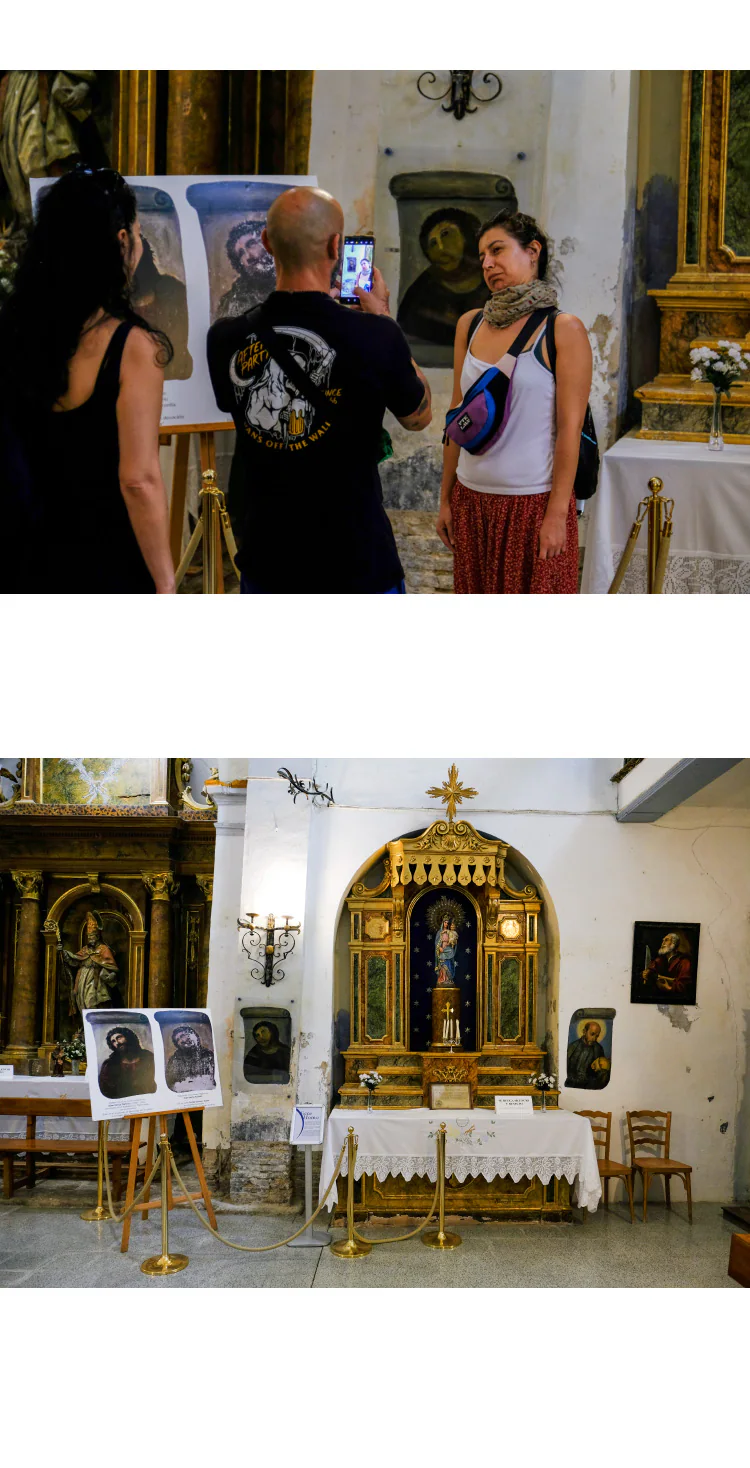
A group of visitors, in July this year, pose in front of the ‘Ecce Homo’. Oscar Chamorro
Next to Cecilia’s painting, the original work of the painter Elías García was placed. EITHER. CH.
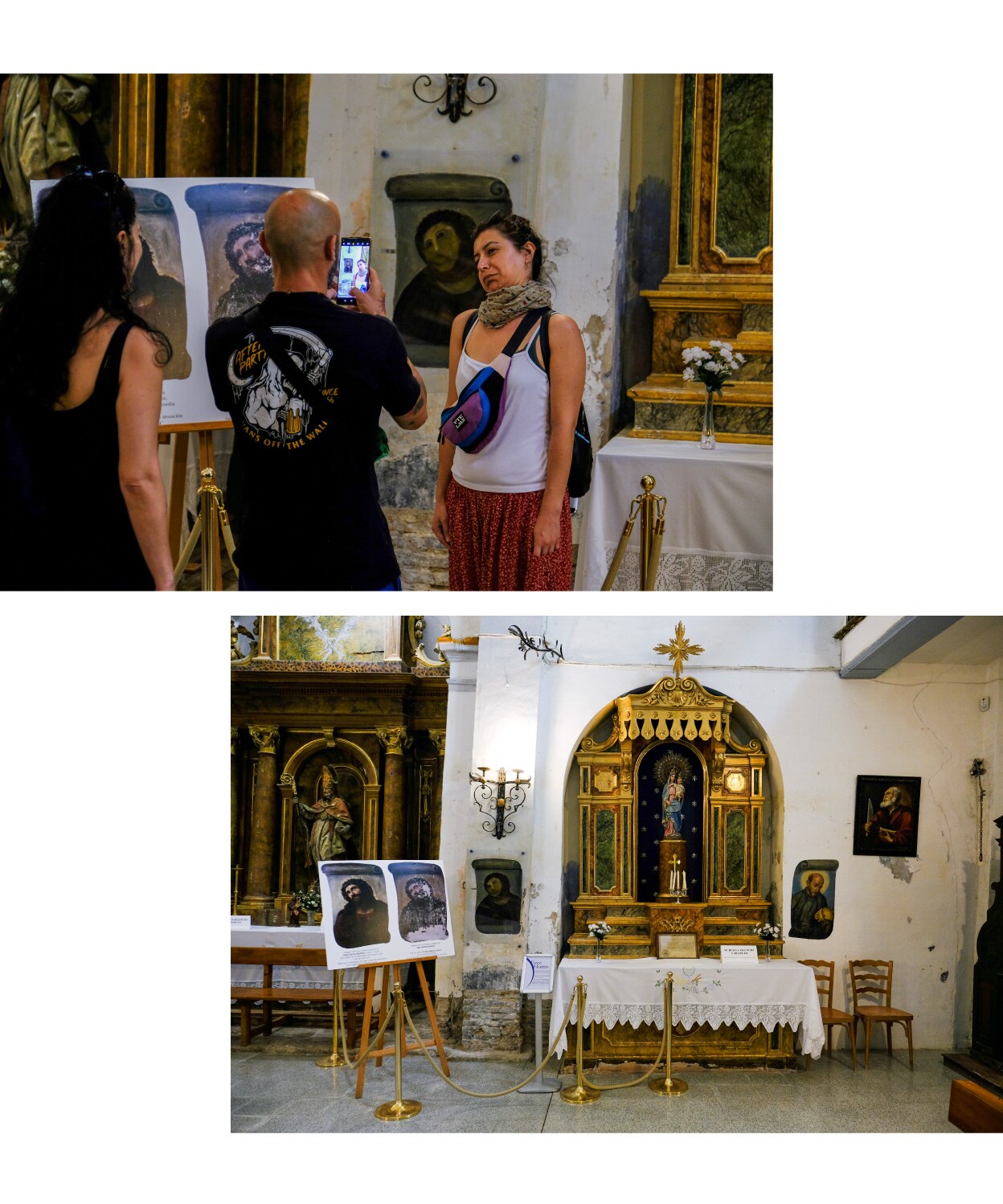
A group of visitors, in July this year, pose in front of the ‘Ecce Homo’. Oscar Chamorro
Next to Cecilia’s painting, the original work of the painter Elías García was placed. EITHER. CH.
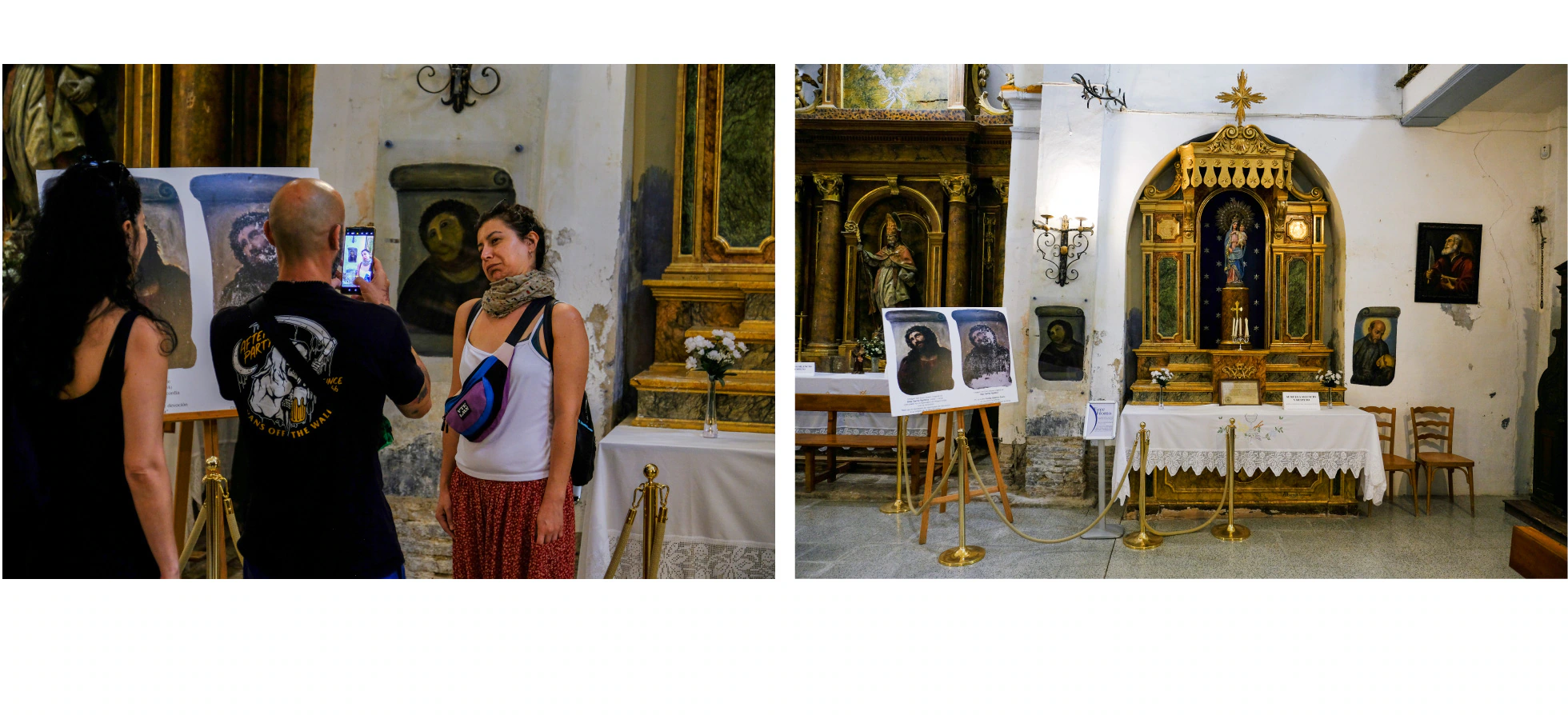
A group of visitors, in July this year, pose in front of the ‘Ecce Homo’. Oscar Chamorro
Next to Cecilia’s painting, the original work of the painter Elías García was placed. EITHER. CH.
Also a few years ago, in 2016, Cecilia was still living next to the sanctuary mansion when she opened the door to some strangers who wanted to meet her. She did not know it then, but director Alejandro Amenábar was in her room. That encouraged the possibility of recording a film based on the life of the painter and her intervention in the work of Elías García. However, Arilla points out, the director himself, with other projects in progress, would have ruled it out. At least at that time.
Another project that would already be completed and that will see the light of day in the short term is a documentary that will be broadcast on AppleTV. A recording team traveled to the Borjana district in 2020, in the midst of a pandemic. “They have already paid us for the image rights and they already have a free pass to broadcast,” explains the mayor, who applauds this type of project that values “a part” of the cultural and tourist wealth of the municipality at an international level.
surrounded by fire
The interest in Cecilia Giménez and the ‘Ecce Homo’ does not wane a decade after the light came out, but the truth is that these are not easy days in the Sanctuary, which was surrounded by flames on the night of August 14, in the middle of their parties. The fire, started a day earlier in the town of Añón de Moncayo, burned 6,000 hectares. Of these, about 1,000 correspond to wooded mass in the Borja environment. “From below (from Borja) the impression was that everything was burning,” recalls Arilla.
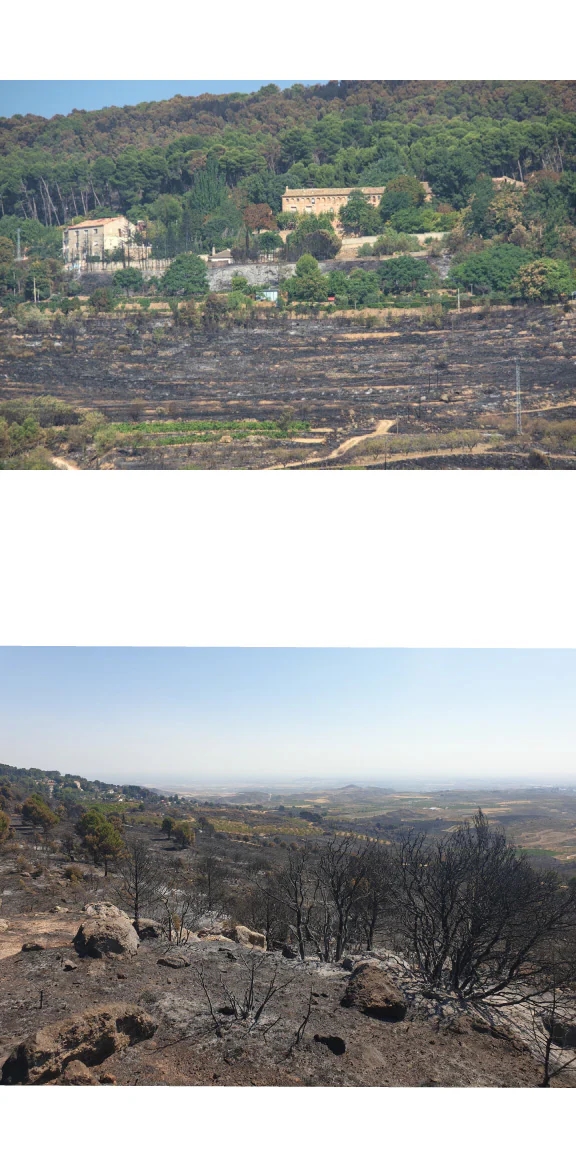
Above, the mansion of the Sanctuary, to the right, where the ‘Ecce Homo’ is located, after the fire has passed. Below, a view of La Muela, with the district on the left. CR
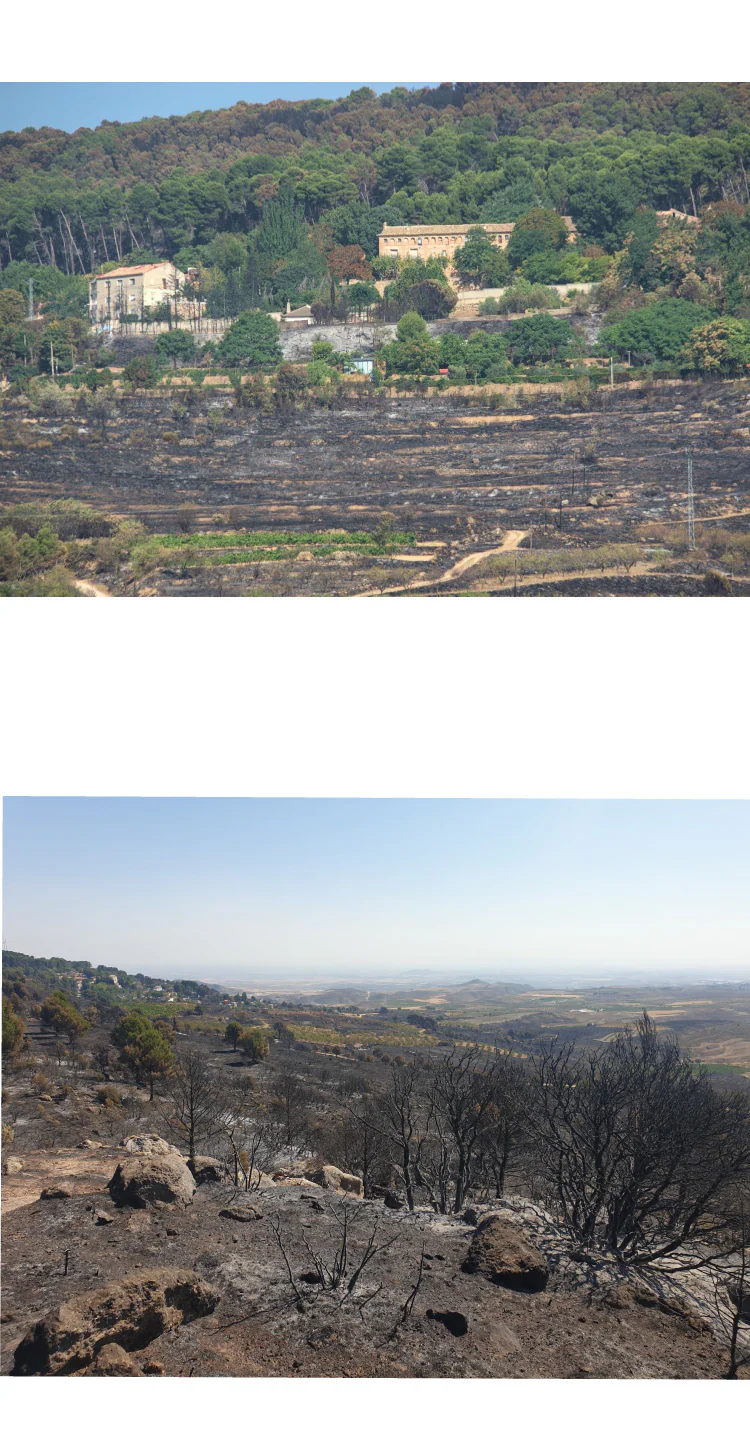
Above, the mansion of the Sanctuary, to the right, where the ‘Ecce Homo’ is located, after the fire has passed. Below, a view of La Muela, with the district on the left. CR
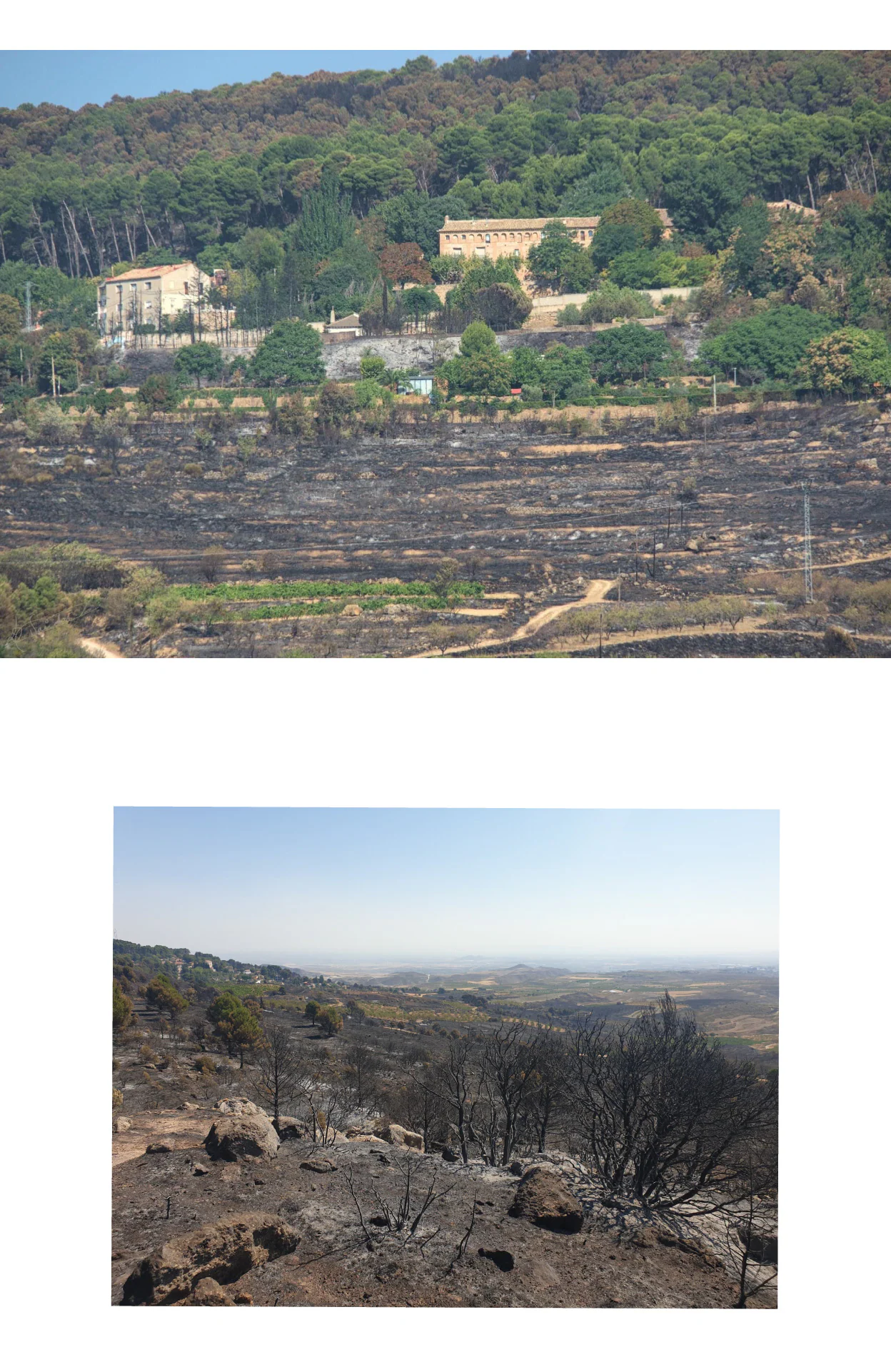
Above, the mansion of the Sanctuary, to the right, where the ‘Ecce Homo’ is located, after the fire has passed. Below, a view of La Muela, with the district on the left. CR
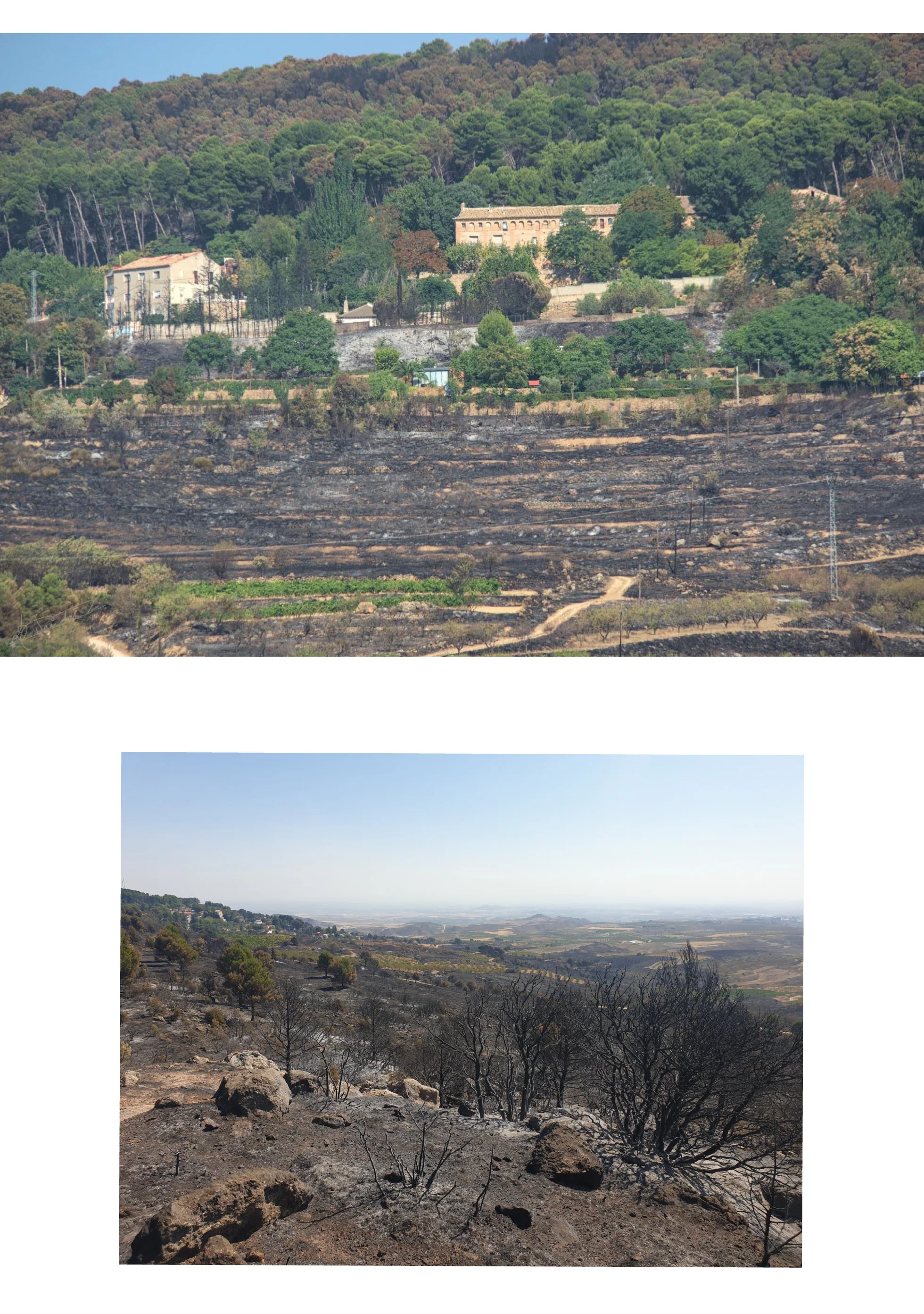
Above, the mansion of the Sanctuary, to the right, where the ‘Ecce Homo’ is located, after the fire has passed. Below, a view of La Muela, with the district on the left. CR
The first light of day revealed that the town center had been saved and the party banners were still hanging in the square. In the environment, however, “the impact is brutal.” The affected municipalities will process, together with the Zaragoza Provincial Council, the declaration as a catastrophic area. In Borja and the Sanctuary they are already putting forward ideas such as the creation of a recreational, sports and tourist space that serves as a safety zone between the district and the future forest or a viewpoint in the highest area of Calvary, razed to the ground, from where it is now possible to glimpse the whole valley.
The entrance to see the ‘Ecce Homo’ was reopened on the 18th in the afternoon and on the 19th 100 visitors entered to see it
This situation, explains Arilla, has not affected visits to ‘Ecce Homo’. The neighbors, who ran out of their houses on August 14, returned on the 17th and on the afternoon of the 18th the church was reopened to the public. “There were already people waiting outside,” says the mayor. The next day they had another 100 visits, “normal for the month of August.”
It will be on September 10 when a commemorative act will be held in Borja in which the work of the media in dealing with the media phenomenon will be valued and the figures of Elías García and Cecilia Giménez will be extolled. The painter, who is now 91 years old, lives in a residence and no longer clearly remembers what happened ten years ago. However, it is a fact that today, as then, the phenomenon of ‘Ecce Homo’ seems incombustible.
www.hoy.es
Eddie is an Australian news reporter with over 9 years in the industry and has published on Forbes and tech crunch.